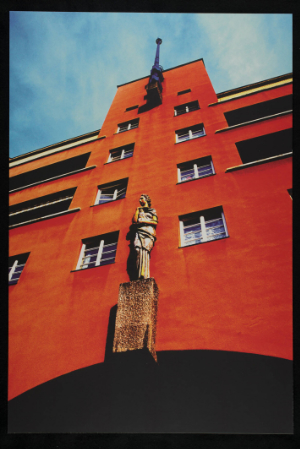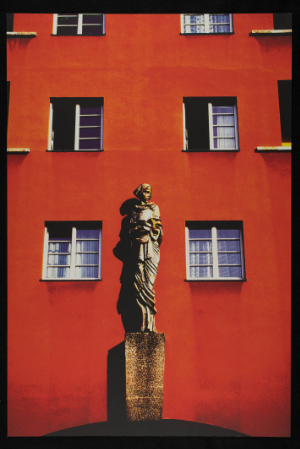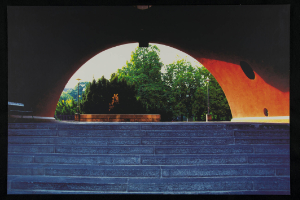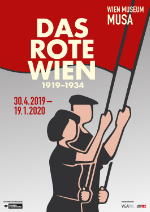 |
 |
 |
 |
 |
 |
| |
 |
|
 |
 |
 |
  |
  |
 |
 |
 |
 |
 |
 |
 |
BUILDING |
 |
|
 |
|
 |
 |
 |
| |
 |
| 
 |
Karl Marx-Hof
|
|
 |
 |
 |
 |
DESIGNER |
 |
|
|
 |
|
 |
 |
 |
| |
 |
|
 |
 |
 |
 |
LOCATION |
 |
|
|
 |
|
 |
 |
 |

|
 |

|
Continent |
|
 |
|
Nation |
|
 |
|
State |
|
 |
|
Town |
|
 |
|
Neighborhoods |
|
 |
|
Address |
|
 |
|
|
|
 |
|
Website |
|
 |
|
 |
 |
 |
 |
MAP |
 |
|
|
 |
|
 |
 |
 |
| |
 |
|
 |
 |
 |
 |
|
TYPOLOGY |
 |
|
|
 |
|
 |
 |
 |
|
|
 |
ARCHITECTURE | Residential buildings
Multiple dwelling
| |
 |
 |
 |
 |
CHRONOLOGY |
 |
|
|
 |
|
 |
 |
 |
Project |
 |
|
 |
| 
 |
1926 - 1927
|
|
Realisation |
 |
|
 |
| 
 |
1926 - 1930 |
|
 |
 |
 |
 |
THE BUILDING IN CINEMA |
 |
|
|
 |
|
 |
 |
 |
| Title |
 |
|
 |
| Il portiere di notte [The Night Porter]
|
|
| Directed by |
 |
|
 |
|
| Nationality |
 |
|
 |
|
| Year of production |
 |
|
 |
|
| Cast |
 |
|
 |
| Dirk Bogarde, Charlotte Rampling, Philippe Leroy, Gabriele Ferzetti, Giuseppe Addobbati, Isa Miranda, Nino Bignamini, Marino Masé, Nora Ricci |
|
| Building's role |
 |
|
 |
|
 |
 |
 |
 |
 |
 |
 |
BIBILIOGRAPHIC REFERENCES |
 |
|
|
 |
|
 |
 |
 |
|
 |
 Gerald Kriechbaum, Genoveva Kriechbaum (ed.), Gerald Zugmann (photo), Karl-Marx-Hof, Versailles der Arbeiter. Wien und seine Höfe, Holzhausen Verlag, Wien 2008 Gerald Kriechbaum, Genoveva Kriechbaum (ed.), Gerald Zugmann (photo), Karl-Marx-Hof, Versailles der Arbeiter. Wien und seine Höfe, Holzhausen Verlag, Wien 2008 |
|
|
| Giovanni Denti, Karl Ehn. Il Karl Marx-Hof, Alinea, Firenze 1997 |
|
|
| Vieri Quilici, "Vienna Rossa/Red Vienna 1919-33", Domus 608, luglio-agosto/july-august 1980, pp. 24-25 |
|
|
| Bruno Zevi, Spazî dell'architettura moderna, Einaudi, Torino 1973, tav. 63 [I. La genesi dell’architettura moderna] |
|
 |
 |
 |
 |
 |
 |
 |
EXHIBITIONS |
 |
|
|
 |
|
 |
 |
 |
| |
 |
Alfredo Jaar. Das Rote Wien / Red Vi enna, Vienna [Wien], MAK Schausammlung Gegenwartskunst / Permanent Collection Contemporary Art, 9 june / 5 september 2021 enna, Vienna [Wien], MAK Schausammlung Gegenwartskunst / Permanent Collection Contemporary Art, 9 june / 5 september 2021
With his MAK exhibition Red Vienna, artist, architect, and filmmaker Alfredo Jaar (* 1956, Santiago de Chile) highlights Vienna’s social program in the interwar period, which he has already been concerned with since the 1980s. Red Vienna, that celebrated its 100th anniversary in 2019, is one of the most spectacular housing initiatives in the world. For his exhibition at the MAK, the artist, who lives in New York, developed a multi-layers spatial installation documenting his long-standing artistic study of Red Vienna.
 Red Vienna is marked by the years 1919 to 1934 when the Social Democratic Workers’ Party received absolute majority in the federal state and communal elections in the Austrian capital. Before Red Vienna came to an abrupt end due to the takeover of the Austrofascists in the February fights in 1934, it was a unique socio-political and cultural-educational reform program that can count the alleviation of the catastrophic housing shortage after World War I to one of its greatest achievements. Red Vienna is marked by the years 1919 to 1934 when the Social Democratic Workers’ Party received absolute majority in the federal state and communal elections in the Austrian capital. Before Red Vienna came to an abrupt end due to the takeover of the Austrofascists in the February fights in 1934, it was a unique socio-political and cultural-educational reform program that can count the alleviation of the catastrophic housing shortage after World War I to one of its greatest achievements.
The achievements in the field of social housing that nowadays appear downright utopian are the focus of Alfredo Jaar’s monumental 35-part photo series on Red Vienna, which was successfully acquired for the MAK Contemporary Art Collection in 2019. For more than 40 years, the artist’s attention has been drawn to Vienna. “I started visiting and photographing Red Vienna during my first trip to Vienna in the mid-eighties. As an architect and artist, Red Vienna exercised an immediate fascination on me as soon as I discovered the first buildings. I walked for hours and days, searching for its traces, impressed by its actuality, moved by its survival,” Alfredo Jaar stated.
Several images show iconic motifs linked to two of the largest and most famous communal buildings—Karl Marx Court (1927–1930) by Karl Ehn and the court at Friedrich Engels Square (1930–1933) by Rudolf Perco. Winarsky Court (1924/25) as well as Otto Haas Court (1924–1926) with contributions by Peter Behrens, Josef Frank, Josef Hoffmann, Adolf Loos, Margarete Schütte-Lihotzky, and Oskar Strnad, some of the most important architects of the interwar period, are also present in the photo series.
One striking characteristic of Alfredo Jaar’s photographs is their strongly intensified color saturation that doesn’t correspond to the usual images of Red Vienna. The artist lets the exhibition space appear in an intensive colorfulness in order to create an atmosphere that symbolically illuminates the model of society of Red Vienna. Specifically for the MAK exhibition, the artist developed an oversized neon sign with the words “Red Vienna” which alludes to the multitude of shining advertisement that has been shaping the image of modern cities since the 1920s.
Jaar intertwines the media image, script, and light to a tension-filled comment on Red Vienna from which a positive counter model for our current urban society can still be deduced—not only in light of economic crises caused by the actions of financial capitalism but also and particularly with regard to the demise of the basic principles of collective coexistence in times of increasing social indifference.
 In this context, the question would be what can be saved from the communal politics of Red Vienna under the conditions of contemporary neo-liberalism, which possibilities for design and development can be derived for future urban strategies, but also which alternative potentials it might already carry. Possibly, very concrete starting points could also exist: Two images in Jaar’s photo series hint towards the fact that the communal buildings at the time were constructed with means from the housing tax.
Credits
Photos © Alfredo Jaar, courtesy of MAK
|
|
|
 Das Rote Wien. 1919-1934, Vienna [Wien], Wien Museum MUSA, 30 april 1919 / 19 january 2020 Das Rote Wien. 1919-1934, Vienna [Wien], Wien Museum MUSA, 30 april 1919 / 19 january 2020 |
|
 |
 |
 |
 |
 |
 |
 |
CLIENT |
 |
|
|
 |
|
 |
 |
 |
| |
 |
|
 |
 |
 |
 |
DIMENSIONAL
DATA |
 |
|
|
 |
|
 |
 |
 |
| Lenght |
 |
|
 |
|
| Number |
 |
|
 |
|
| Capacity |
 |
|
 |
|
 |
 |
 |
 |
STAFF |
 |
|
|
 |
|
 |
 |
 |
Project  |
 |
|
|
 |
|
|
 |
|
Art intervention |
 |
| Joseph Riedl [ sculptures ] |
|
 |
  |
 |
|
|